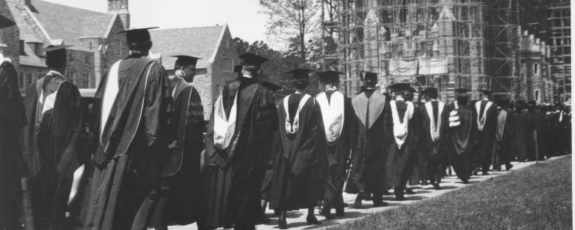
Telling the Story of a Century at Duke University
Duke Centennial book collects major moments and little-known stories of Duke’s history
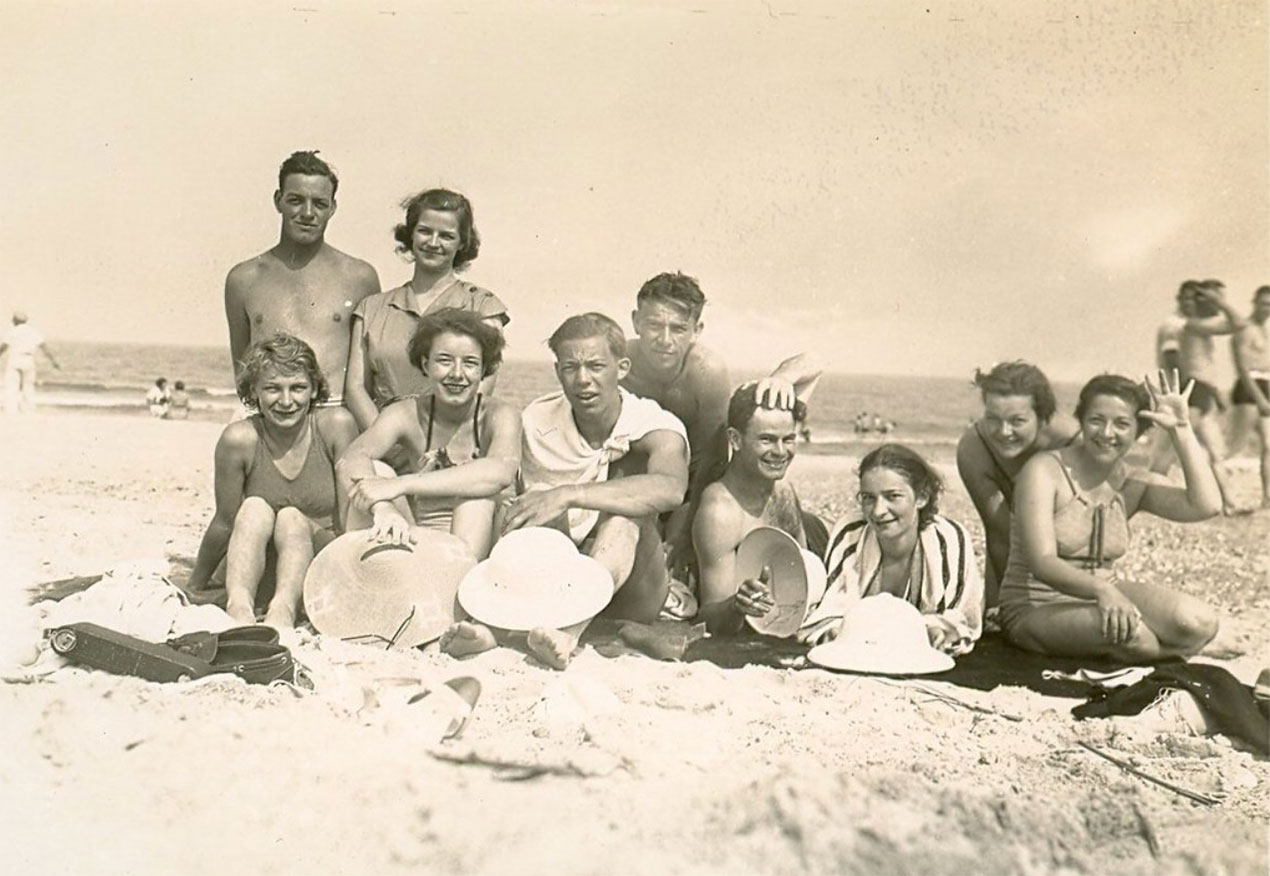
The image was taken by Elizabeth Hatcher Conner, a member of Duke’s class of 1939 and a photographer for The Chanticleer, the college yearbook. It is part of a collection in the Duke University Archives, but you can also see it on page 30 of “Duke University: The First One Hundred Years,” a new coffee table book produced by the university as part of its ongoing Centennial celebration.
The book is a comprehensive collection of seismic moments and little-known tidbits that tell the collective story of Duke’s journey.
The beach photo was just one of hundreds selected by a small team that spent a year putting the 168-page book together.
It is one of three in the book that Conner took while a student in the 1930s. Another shows her dorm room – Epworth 201 – and the third shows the view from Duke Chapel looking toward Chapel Drive.
“I was drawn to them because of the immediacy of the images,” said Carolyn Gerber, the book’s author and a 1990 Duke graduate. “They somehow feel modern and current although they were taken almost a century ago.”
The idea for a Centennial book grew out of the Trustee Strategic Task Force on Duke’s Centennial Celebration, created by President Vincent Price in 2020-21 and led by Trustee Lisa Borders. The book was designed with a colorful and engaging format by Lacey Chylack, art director for Duke Magazine. Jill Boy, executive director of the centennial celebration, was the managing editor and production manager, and Roger Lewis, previously of Duke Procurement, was its publishing manager. Garrett McKinnon, a Duke history instructor, was an archives researcher on the project.
The team also included partnerships with Duke University Press, the Duke University Archives, Medical Center Archives, University Communications and Marketing, and many others across the university.
The book is available for $29.95 at the University Store, the Gothic Bookshop, the Medical Center Bookstore, the Terrace Shop. It is also available online at Duke Stores and on Amazon and Barnes & Noble.
Released this month, the book is rich in both mainstream Duke history and the sorts of oddball details that alumni will adore.
The key, weighty moments in Duke history are accounted for. You can read about the Duke family and the creation of The Duke Endowment, examine original architectural renderings for West Campus and Duke Gardens, learn about the civil rights era on campus and see the New York Times Magazine cover story in 1984 that centered Duke in a feature on “Hot Colleges.”
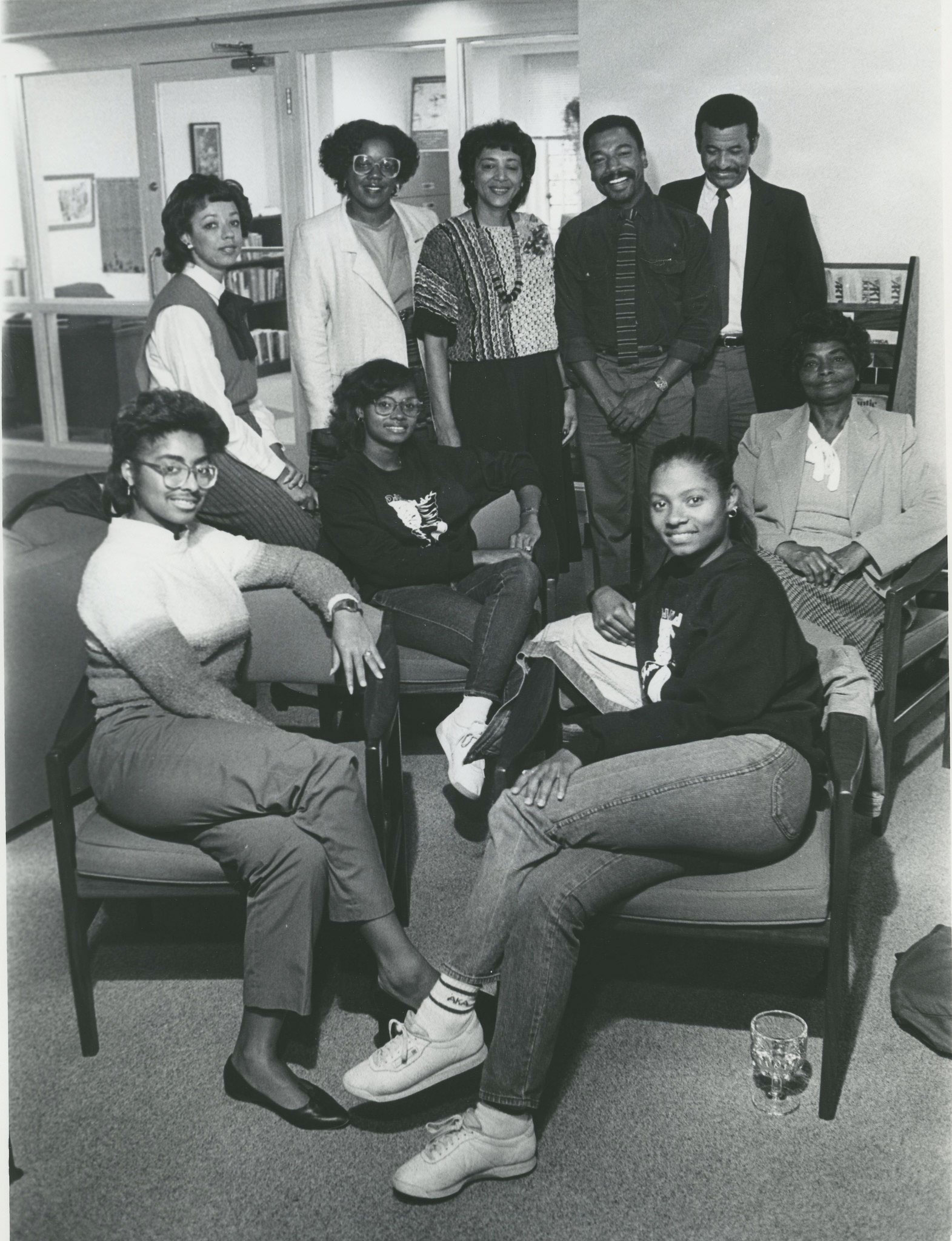
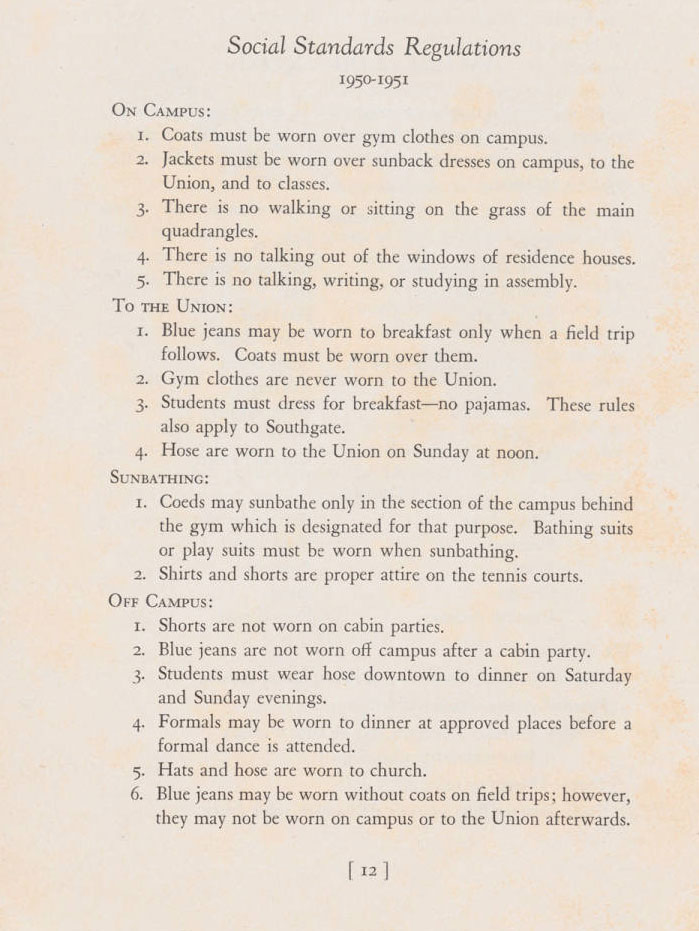
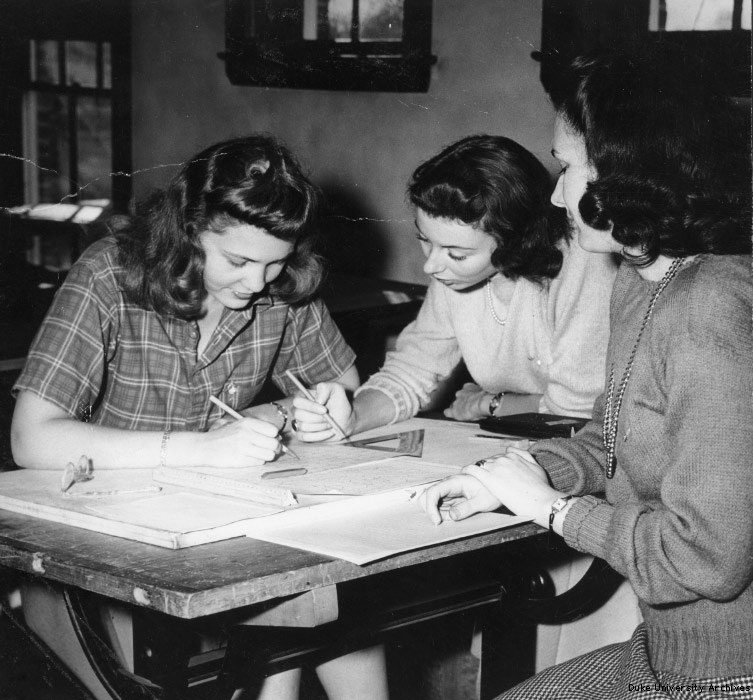
But you can also immerse yourself in fascinating Duke minutiae. Did you know that for about 30 years, the Duke Parapsychology laboratory studied “supposed psychic and paranormal experiences such as telepathy, ESP, hypnosis and levitation?” (Duke eventually closed the lab, acknowledging its research could not be supported by scientific evidence.)
You can read the social standards female students had to follow in the early 1950s – no talking out dorm room windows, no pajamas at breakfast, and absolutely no sunbathing – except for on one piece of land behind the campus gym designated for that purpose.
Music fans will wish they were at Duke in the 1980s. If you were on campus between 1982 and 1986, for example, you could have walked across the quad to see live performances in Cameron Indoor Stadium or Page Auditorium by The Grateful Dead, R.E.M., Billy Idol, Eric Clapton and Elvis Costello, among other rockers.
It’s a lot of fun.
Gerber, the book’s author, has spent 17 years at Duke in various roles in undergraduate admissions, communications and the president’s office and is widely regarded as a go-to campus resource on matters of Duke history.
She spoke to Duke Today about the goals for the book and some of the surprises she and the book team discovered along the way. Here are excerpts:
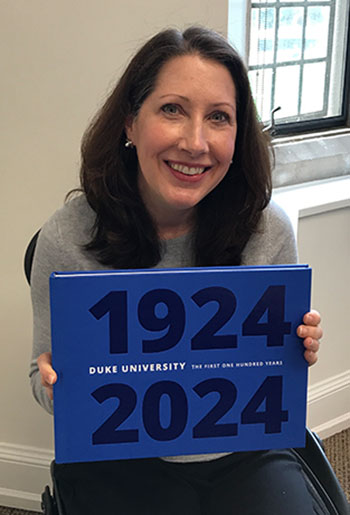
The book has a balance between important, historical topics like the creation of West Campus or the civil rights era on campus, and the fascinating tidbits that you’d never think of otherwise. Was it intentional to have such a balance?
CAROLYN GERBER: It was always intentional to be balanced in a number of ways that reflected the character of the university and the goals of Duke’s centennial celebration. A balance of serious and playful; a balance of famous people and people who are perhaps less well known. A balance of stories you know and stories you’d never know; and a balance of all the things that make up this university – research and teaching and clinical care and athletics, arts, community engagement and plenty of other things.
We were always thinking about the many audiences for this book. We wanted it to be interesting and meaningful and engaging for all kinds of people connected to Duke.
And you didn’t just want to cover the topics people already knew.
GERBER: We definitely wanted the surprising stories, the stories you had not heard before.
What were a few things you discovered along the way that surprised you?
GERBER: One of the stories I did not know about is how Duke in the 1930s hired scholars fleeing Nazi Germany. In the 1930s there was a group of scholars who were clearly in danger in Nazi Germany. They were either Jewish, or their scholarship was of a type the Nazis did not approve of. The American government reached out to universities and asked them to hire some of these talented people who needed an academic home, for safety. Duke responded immediately. All told, Duke employed six scholars fleeing Germany in the 1930s.
It was something I really didn’t know a lot about and immediately made me proud of Duke for this moment.
That’s a pretty heavy example. How about something more lighthearted?
GERBER: I was struck by the regulations in the 1950s governing female students and their behavior and appearance. The fact that these were codified; they had phrases like ‘there is no walking or sitting on the grass of the main quadrangles. Blue jeans may be worn to breakfast, only when a field trip follows. Coats must be worn over them.’ And the strictures extended off campus. They weren’t allowed to wear jeans off campus except under strict circumstances. The explanation was that they were representing Duke everywhere they went.
And yet at the same time, women at Duke had access to the full Duke academic experience. The admissions standards were higher for women than men, so the women who came here in those decades were amazing.
Safe to assume there was no parallel set of rules for what male students could wear?
GERBER: You can certainly say there were way more restrictions imposed on female students.
Images are so important to this book. How did that process work, and how hard did you dig for some of the more obscure images?
GERBER: The Duke Archives already has a digitized collection, so that was always our starting point. I can’t tell you just how helpful the staff were – in particular Valerie Gillispie and Ani Karagianis. Obscure speeches and lectures – every time we needed to know more about something, they could put their hands on it.
Here’s one example: Reynolds Price’s Founders’ Day speech in 1992 – I knew what he had talked about in general because I was there and had heard it. But the archives was able to find his actual speech. We reference it in on page 103. It was kind of a turning point in the early 1990s where Duke was beginning to be more reflective about what kind of university it wanted to be. It had this surge of applications in the late 80s and early 90s and suddenly it had the opportunity to be much more selective. It needed to foster a more intellectual atmosphere so the students who came here found an environment that was welcoming and rewarding. Reynolds Price was speaking to that. It is often referred to as a ‘fiery’ Founders’ Day speech. It’s kind of a tough love moment from him, trying to inspire Duke to be more intellectual.
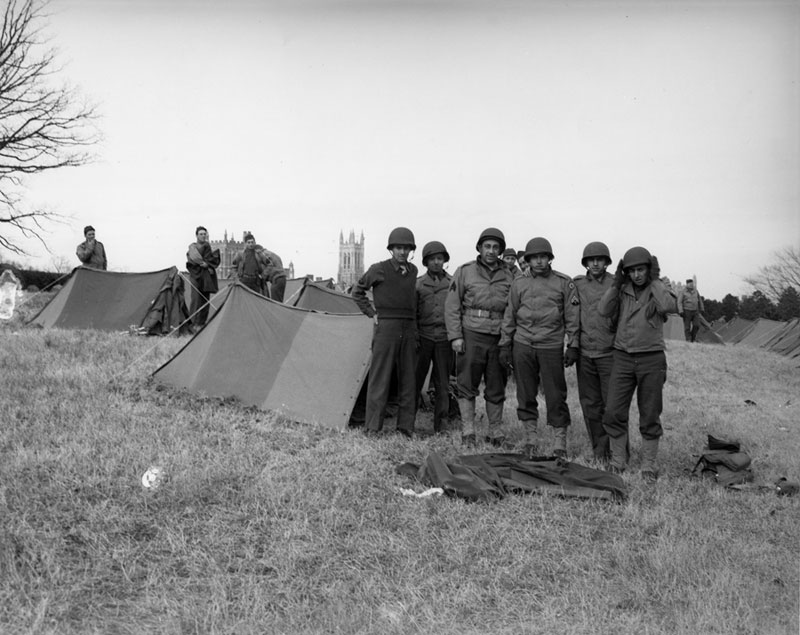
How did you approach some of the more controversial moments in university history?
GERBER: One of the guiding principles of the Centennial is to tell Duke’s history in a complete and accurate way that anyone who was there could see themselves in. That’s where we rely on primary sources. Every decade in the book includes “Voices” – first-person narratives from someone in that decade. When we had complex stories to be told—for example, in the civil rights era in the 1960s—I really leaned on voices from that decade.
It was always our goal to be honest about Duke’s history, and to be honest about painful moments and be candid and forthright about it.
Does this book illuminate a particular point in time that was, perhaps, most significant in Duke’s growth?
GERBER: Duke has such an interesting history. Founded as a one-room schoolhouse in Randolph County, it grew to become Trinity College, then moved to Durham in 1892. Then 30 years later there was this enormous gift: James B. Duke created The Duke Endowment and designated a portion for Trinity College, which changed its name to Duke University. The fact that West Campus was all built at one time, with this extraordinary unity of architecture, because Mr. Duke wanted it to look like a real university from Day 1. I love the photos near the beginning (on page 18) where you see the brand new university and yet it’s very recognizable as Duke. The fact that it can be so recognizable all the way back in the 1930s is fascinating to me.
Duke history photos courtesy Duke University Archives.